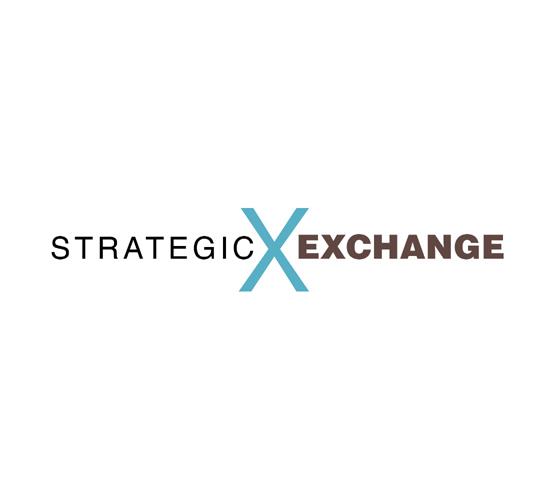Strategic Exchange: What will the next stage of recovery look like? - Aug/Sept 2021
By Kemp Harr
We’ve now passed the anniversary of last year’s Covid-driven stall in the economy, and from here forward, we’ll be chasing numbers from the recovery we experienced in the second half of last year. Economists tell us that this year’s GDP growth rates of 6.3% in Q1 and 6.5% in Q2 have put the U.S. economy back on track at pre-pandemic levels.
The two big wildcards on everyone’s mind are the Delta variant and inflation. What effect will the recent surge in virus cases coupled with higher costs for practically everything we buy have on the growth trajectory of the economy? Said more succinctly, when will everything get back to normal? Some of you might say, “Who wants normal? My business is up over 20%.” Great, but what about your bottom line? Are you chasing your tail for the same level of earnings? And if the government keeps printing money, what is real value of those profits you are earning? But I digress.
Back to flooring: Did you read between the lines on The Dixie Group’s Q2 earnings press release and learn that residential carpet sales for the entire industry here in the U.S. were up over 50% versus the same quarter of the prior year? Good news, eh? But let’s remember that was in comparison to the shutdown quarter of 2020. When you compare Q2 2021 to the same quarter in 2019, residential carpet sales were up 11%. And if you dial out the price increases, growth was closer to 0.5%. But at least it’s moving in the right direction.
We did learn at the CCA Global meeting in mid-July that total LVT revenue from all 1,400 members has surpassed the revenue from residential carpet sales. That’s a milestone worth repeating, especially when you remember that the first C in CCA used to stand for carpet.
THE LAST WORD ON STAINMASTER
While we’re on the topic of carpet, let’s talk one last time about Stainmaster. The April sale of the Stainmaster brand to Lowe’s is old news, right? For everybody but Lowe’s, it’s the end of an era that started with DuPont in 1986 with a three-year, $85 million consumer advertising campaign-the quintessential ingredient brand built on performance and a promise of lasting beauty.
There is no denying that the launch of Stainmaster, and Antron on the commercial side, gave the carpet industry a significant boost in share growth. The older folks in the business will tell you that from day one, as the product was rolled out on allocation, the carpet mills started to look with envy on the profits the fiber guys were taking out of the mill owners’ pockets. Some carpet industry leaders like Dan Frierson loved it, saw what it was doing for the industry and nurtured it. Others spent every waking hour trying to defeat it by backward integrating and developing proprietary fibers of their own. At its peak, nylon 6,6 was king, selling one billion pounds a year into the carpet market. Today, that number is closer to 130 million pounds.
Based on what we’re hearing from our mill friends, Invista-the DuPont business that owned the brand and manufactured both the polymer and the carpet fiber that was sold to Koch Industries in 2004 for $4.2 billion-plans to seek its next era of profits by selling nylon 6,6 engineered plastics to the automotive industry, more specifically the budding EV sector.
Some would say this last statement is conjecture, as neither Koch nor Invista have announced this shift in focus-but the handwriting is on the wall.
In July, the middle managers at Invista announced to their carpet mill customers that they were increasing the price of their nylon 6,6 carpet fiber by 20% for solution-dyed and 25% for white-dyeable, effective immediately. Let’s not forget that, at this stage, this is an unbranded fiber. One might have thought when Invista sold the brand to Lowe’s and relinquished all of the expenses related to supporting the brand that they would have lowered the price. Gone is the cost load of co-op advertising, national cable advertising, warranty support as well as the marketing team, which was disbanded after the sale of the brand asset to Lowe’s. Some pundits have said that those branded-fiber support expenses could cost as much as $0.20 to $0.30 a pound. So, in reality, Invista has raised its pricing by roughly 40% since the sale of the brand three months ago.
Let’s not forget that, at this point in time, Invista has its carpet mill customers over a barrel. Today, based on the recent surge in demand for BCF carpet fiber, every pound produced has a home, so there is no excess capacity. Secondly, it takes time to restyle and distribute samples to the 9,500 independent carpet dealers who are anxious to put the Stainmaster brand in the rearview mirror but who also need to service the consumer during this surge in demand.
As Invista takes one last gouge out of its carpet mill customer base, how can we be so sure it is moving on to focus on the automotive EV market? It may be conjecture, but from what we hear, the temperature performance of engineered plastics made with nylon 6,6 fits hand in glove with the lightweight temperature fluctuating needs of battery-powered cars. Invista is already king of the airbag business, and battery cases are a natural fit for the polymer Invista produces at its Camden, South Carolina plant, where carpet fiber is produced today.
If you have any comments about this month’s column, you can email me at kemp@floorfocus.com.
Copyright 2021 Floor Focus
Related Topics:The Dixie Group
